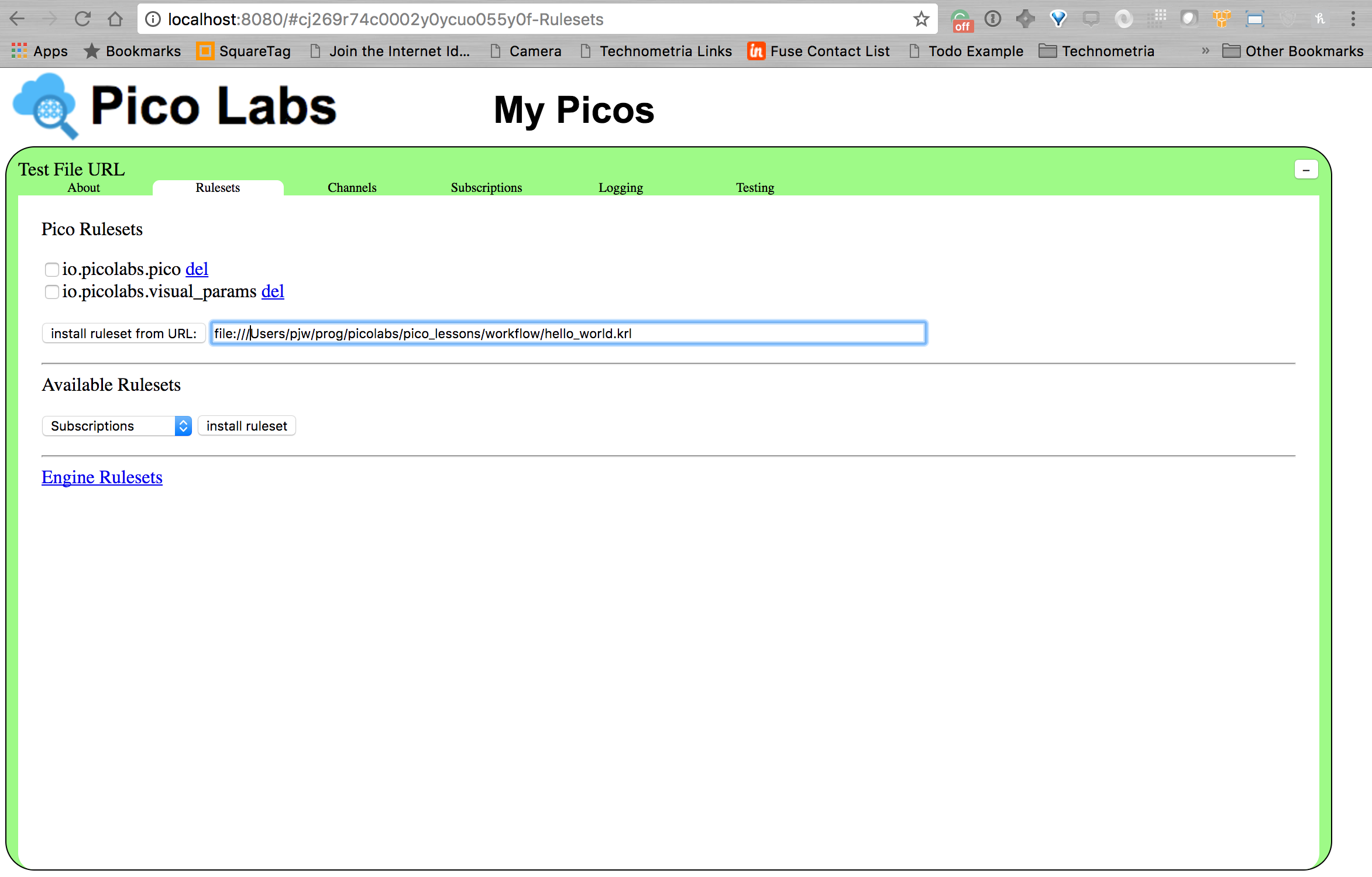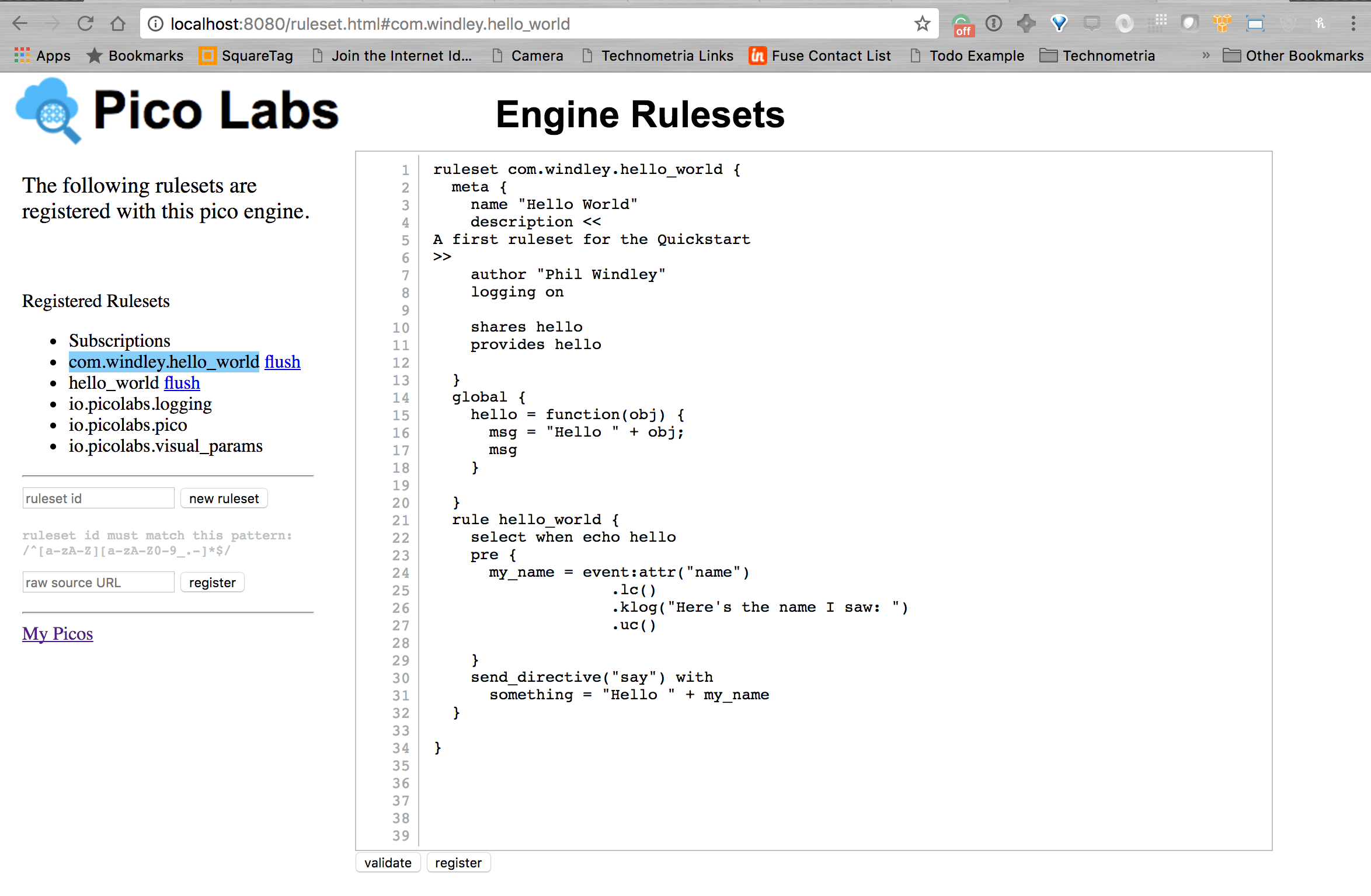...
Follow the directions in Setting Up a Git Pre-Commit Hook to Parse KRL to set up the KRL parser and ensure that KRL files are parsed before they are committed.
Add the file to the repository and commit it.
Code Block language bash $ git add hello_world.krl $ git commit -a -m "initial commit" Flushing com.windley.hello_world [master (root-commit) 4a2f95c] initial commit 1 file changed, 34 insertions(+) create mode 100644 hello_world.krl
With the pre-commit hook in place, you're assured that there are no parse errors in your ruleset if it commits.
Deploy
Deploying consists of two steps: registering the ruleset with the engine and installing it in any picos in which it should run.
- Register the ruleset with the pico engine. There are automated ways to do this, but for initial development, you can do in manually. Navigate to the rulesets.html resource on your engine (i.e. if you engine is running at localhost:8080, then go to http://localhost:8080/rulesets.html. You'll see a screen that looks like this:
Deploy
...
Also, the pre-commit hook flushes rulesets in a local engine.
- install the ruleset in your pico by navigating to the Rulesets page in the pico engine interface and putting it's full URL in the box labeled "Install ruleset from URL:" and clicking the button. We are using the file: URL scheme to load the ruleset from the filesystem directly into the engine rather than relying on an external server. The file URL is the schema file:// prepended to the full pathname of the file (yes, there are three slashes):
file:///Users/pjw/prog/picolabs/pico_lessons/workflow/hello_world.krl You'll now see the ruleset listed in the installed rulesets in the pico. If you click on the "Engine Rulesets" link, you'll navigate to a page that shows the rulesets registered with the engine.
...

